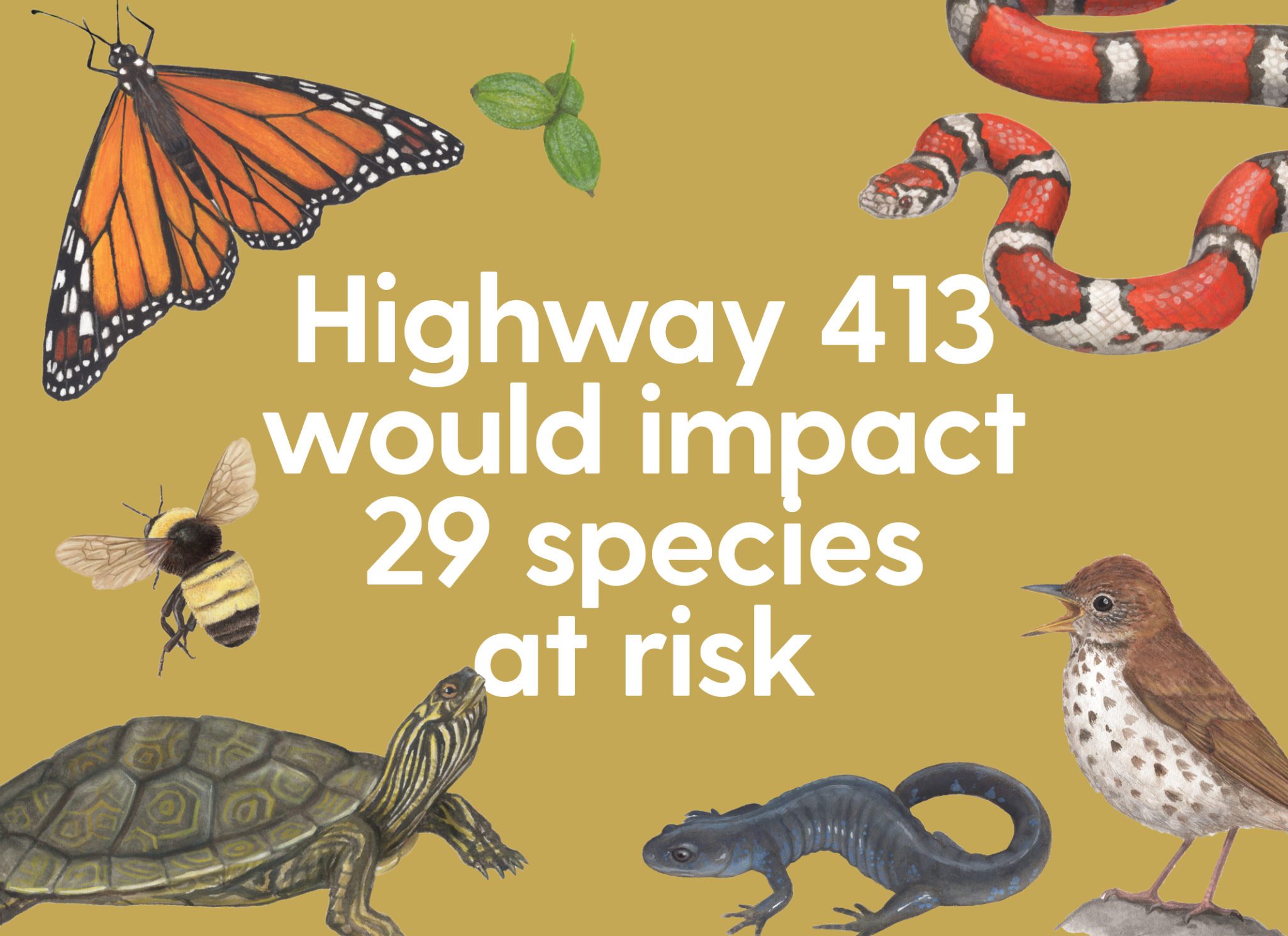HIGHWAY 413: The Road to our Ruin
How Highway 413 would impact threatened and endangered species
To better understand the risk to endangered and threatened species, Environmental Defence commissioned biologists at the University of Guelph to review available information and identify what at-risk species have been sighted near the proposed route for the highway, and how the construction of the highway would impact the future of each at-risk species in the region.
The analysis revealed that Highway 413 would have some serious impacts to natural areas and species. If built, the highway would:
This report looks at 29 at-risk species identified by the biologists, their status and the threat posed if Highway 413 is built

How the Study for this report was done:
The biologists, Karl Heide and Dr Ryan Norris, of the University of Guelph, compiled information on the habitat requirements and threats associated with species at risk known to occur in Southern Ontario. They then used data from the Government of Ontario’s Natural Heritage Information Centre (NHIC) to map sightings of these species in the proximity of the proposed route of Highway 413.
To confirm whether the sightings were accurate and current within the area of Highway 413, the scientists also analyzed data from the past five years from eBird, Inaturalist, the Ontario Breeding Bird Atlas, the Ontario Butterfly Atlas, the Ontario Reptile and Amphibian Atlas, the Ontario Ministry of Natural Resources and Forestry, and recent reports from the Committee on the Status of Endangered Wildlife in Canada (COSEWIC).
If built, Highway 413 would destroy species habitat including a section of the Greenbelt, pollute the many rivers and streams it would cross and impact 29 federally listed species at risk
AT RISK SPECIES BY TYPE
Number of hectares of species habitat that will destroyed if Highway 413 is built
Number of rivers and streams that Highway 413 would cross if built
In May 2021, Highway 413 was designed for a review under Canada’s Impact Assessment Act. When this report was published in October, 2022, the Impact Assessment Agency had not yet decided whether to conduct an impact assessment nor the scope of that assessment. However, it was expected to make those decisions in the near future.
Due to the number of species at risk impacted and the breadth of environmental impacts more generally, we recommend that the Impact Assessment Agency proceed with a full federal Impact assessment – the most comprehensive assessment possible – and conduct a thorough assessment of the risks and impacts to federally listed species at risk.
In recent years, Ontario has watered down the Endangered Species Act, removing protection for species that are endangered locally but also live elsewhere, an approach that scientists have condemned. Ontario also launched the controversial “pay to slay” fund that allows developers to destroy endangered species habitat provided they pay into a fund managed by the province.
Given the province’s track record on endangered species, there’s a real need for federal oversight and a full federal assessment of Highway 413.
Let's take action!
ACKNOWLEDGEMENTS: Produced by ENVIRONMENTAL DEFENCE. Researched and written by Karl Heide, M.Sc, University of Guelph and Dr. Ryan Norris, Professor, Department of Integrative Biology, University of Guelph, with contributions by Allen Braude. For a full list of contributors please download the report.
© Copyright March 2022 by ENVIRONMENTAL DEFENCE CANADA. Permission is granted to the public to reproduce or disseminate this report, in part, or in whole, free of charge, in any format or medium without requiring specific permission. Any errors or omissions are the responsibility of ENVIRONMENTAL DEFENCE CANADA.